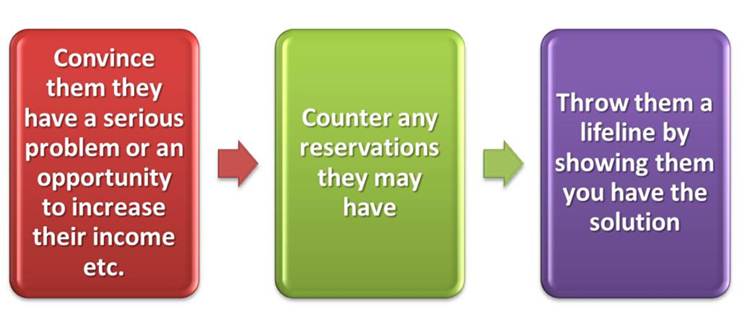Entries Tagged 'Content marketing' ↓
March 26th, 2012 — Content marketing, Content writer, freelance copywriter, freelance copywriting
Kevin Cain of OpenView Blog has kindly agreed to allow me to re-post his blog Deploying the Troops: 5 Tips for Using Freelancers Effectively in Content Marketing on Freelance Copywriter’s Blog.
Kevin Cain oversees content strategy at OpenView Venture Partners, a Boston-based venture capital firm that invests in expansion-stage technology companies. With expertise in corporate communications and content marketing, Kevin has spent the past ten years working with large international financial services companies and consulting firms. Learn more by checking out his content marketing blog or following him on Twitter @kevinrcain.
In my last blog post, I described the important role that freelancers can play in executing a content marketing strategy and provided some tips for building a freelance team. Of course, assembling a team of great freelance talent is just the first step. You then need to figure out the best way to use that talent to get the results you need. While there’s no single right answer, following these rules of the road will help:
1) Put them to the test, onboard the best
Any time you’re working with new freelancers — no matter how impressive their credentials or how highly they’ve been recommended — always start off with a test assignment. The idea is to start them off with a small project that either isn’t a high priority or that you have the time to redo if necessary.
This approach may seem a little counter-intuitive at first — after all, if you’re paying for their time, you want to get something out of it. Even so, you’re much better off testing the waters, rather than finding out that the very important content you’ve entrusted a new freelancer to write needs to be completely redone at the last minute. Your strongest freelancers will quickly prove their worth, and from there it’s easy to start engaging them on meatier projects.
2) Go broad, then get organized
Always try to have a variety of freelancers in your network with different backgrounds, skills, and expertise. Doing so will make the team much more valuable and allow you to create a broader range of content.
Use a spreadsheet to help not only keep track of important logistical details, such as your freelancers’ rates and availability, but also to catalog the types of projects they are best used for and any specific strengths or weaknesses they may have. This is also the place to keep tabs on their performance. I assign a grade to every freelancer I work with, so I know who to send my most important projects to (the A-listers), who are best suited to handling the low-hanging fruit (the B-listers), and who I probably won’t use again (everyone else). Unlike in school, when it comes to creating great content, a C isn’t a passing grade.
3) Provide Structure and Guidance
Freelancers aren’t mind readers or magicians. If you want them to create good content, you have to position them to do so. Set clear expectations, ensure that they have access to the right tools and resources (such as your company’s editorial style guidelines), and make yourself available to talk through ideas and answer questions. While you don’t want to micro-manage, any time you engage a freelancer, be collaborative and invest the time necessary to ensure that you are both on the same page from the start.
4) Use Flat Fees if Possible
Negotiating flat fees for specific projects often makes the most sense. Doing so, rather than simply letting your freelancers bill you for however many hours they work, encourages them to manage their time more effectively and keeps everyone’s expectations in check. That said, there can always be unexpected hiccups that significantly increase the time it takes to complete a project, so offer to adjust fees accordingly. Trying to nickel and dime your freelancers, even when budgets are tight, is rarely a winning strategy.
5) You’re the Boss, Act Like It
It’s up to you to enforce deadlines and standards, provide honest and constructive feedback, and to take action when a freelancer isn’t performing. It’s important to build great relationships with your freelancers, and one of the best of ways to do so is by always providing leadership and direction.
March 21st, 2012 — article marketing, blogging, Content marketing, copywriting tips, email marketing, internet marketing, marketing, online marketing
Marketing your business involves a lot of writing.
Whether you do this in-house, or by hiring in the expertise of a copywriter, you’ll need one very important thing – lots of ideas for content.
Ideas can come from anywhere at any time, so here are a couple of tips to make sure your ideas keep flowing.
1. Paper and pen
Because you never know when inspiration will strike, make sure you have a pen and paper with you at all times (or a digital voice recorder).
During your working day, ideas will come at you from all directions:
- Comments from customers
- An article you’ve read
- A news item
- Mail shots
- Emails…
So when an idea strikes, write it down. It could be the start of a blog post, article or newsletter item.
Customer feedback is particularly important. If you’re scratching around for an idea for your next blog post, or newsletter, where better to look for inspiration than your customers? If they contact you with a question, you could create a ‘how to’ or ‘top tips’ article based around their enquiry.
By keeping a record of ideas like this, you’ll never be scratching around for inspiration.
2. Swipe file
One word of warning – a swipe file doesn’t mean you are free to plagiarise other people’s work.
Every day you are subjected to hundreds of sales messages. You probably subscribe to several newsletters, receive loads of direct mail and read magazine and newspaper articles. Some of which you’ll read and some you’ll ignore.
But with the ones you read, think about what it was that made you take notice of them:
- What was in the headline that made you read on?
- How was it written?
- What type of information did it contain?
- What tone was used?
In other words, what was it that captured your attention? Once you discover that, you can reproduce that effect in your own marketing materials.
What it comes down to is this – online marketing is a continual process. We’re talking about newsletters, emails, web copy, blogs and articles – all things that have to be done regularly to keep your business in your customers’ line of sight.
By regularly jotting down notes, you’ll never be short of ideas for your online marketing.
February 6th, 2012 — blogging for business, Content marketing, Content writer, copywriting tips
What’s the Point of Content Generation?
You all know how important it is to produce a continual stream of content.
But under no circumstances is that content to be a blatant sales pitch.
What? I can’t sell? Then what’s the point?
If you generate content that is just all about selling, no one is going to read it and people will be turned off your company because of it.
But, if you generate content that is full of cracking information that people love, you’ll draw them to you. Mind you, just because you can’t directly sell through your content doesn’t mean you can’t use it to gently persuade them to take a specific action.
What I’m talking about here is to get your reader to do something you want them to do (other than put pounds in your till), such as signing up for your newsletter, downloading your latest report or white paper, following you on a social media platform (e.g. Twitter, Facebook, Google+) or subscribe to your blog RSS feed.
By giving them information in exchange for a relatively minor thing (well, minor in their minds), you can enhance and build your relationship with them.
How to get them to do what you want them to do
There are 2 ways to achieve your goal:
- Through your readers’ fear
- Through your readers’ desires
What do I mean?
Well, everyone is motivated either by having a problem they need to solve, or wanting something that’s going to improve their life, income or general well-being.
In either case, the method to go about convincing them you’re the company they need is to use the following format:

First, convince them they have either a serious problem (this will be particularly relevant if you are a company that helps solve problems) or that they will greatly benefit from you. For many companies, they will fall into both categories, i.e. being a problem solver and a benefits giver.
Secondly, you must counter any potential objections the reader may have, such as price etc.
Thirdly, once you’ve established the fear or desire the reader is feeling, you can offer your product/service as the life line they’ve been looking for.
So, there you go.
Every piece of content you produce must convince your reader to do something, but without overtly selling to them.
Next time you write a blog post, create some web copy or post on a social media platform, think about what you want to achieve from your writing and make sure it has a purpose.
Over to you
Does your content always have a purpose?
Have you found any great methods that work for you?
Leave a comment below and share your successes.
Sally Ormond, Copywriter
November 21st, 2011 — Content marketing, copywriting tips, keywords, search engine optimisation, seo
Search engine optimisation copywriting isn’t just for websites.
If you want your content to be found, you have got to use keywords. However, over use of them is common, which is why you’ve probably come across numerous articles during your searches that are incomprehensible.
For many people, the strong desire to be found causes them to cram as many of their keywords into the articles and blog posts as possible. After all, surely the content is just there to build links – it’s not trying to sell like web copy, so it doesn’t matter – does it?
Of course it does.
Any content you put out on the web will reflect on you and your business.
The fact that you want to optimise your text is a given, so here’s how to do it.
The proper use of keywords in content marketing
Below are the 4 areas where you should concentrate your SEO efforts when producing content.
1. Title tags
Whatever phrase you want to rank for, make sure it’s here.
This is the tag that tells the search engines what your page is about, so make sure you tell them. If you‘re using a WordPress based website/blog, make sure you install the All in one SEO pack because it helps you automatically optimise your posts for the search engines.
2. URLs
In the search results, you will see the title tag (that’s the top part, which is underlined), the URL and then the META description.
You might think it unnecessary to optimise your URL, but because the search engines highlight the keywords that were searched for (in the example below I searched for ‘dog training courses UK’), it’s important your URL slug (that’s the part of the URL that identifies a page using human-readable keywords) contains your keywords.

3. META Descriptions
These have no value when it comes to SEO, but that doesn’t mean you should ignore them.
The META description is the 160 characters of text that appear below the name of the web page in the search results. This is the enticer that is used to attract the click from the user. Therefore, including your keywords within it will help draw them to your post and show its relevance.
4. Content
Of course, you also need to optimise your content. But a word of warning, don’t start thinking keyword density. Because as soon as you do, you will start writing for the search engines and not the reader.
Just write naturally. You will find that because you page is about your keyword, it will naturally appear in your text.
Now, the keen-eyed amongst you have noticed that I haven’t mentioned META keyword tags – and that’s for a very good reason.
They have absolutely no impact on your rankings whatsoever. In fact, back in 2009, Google clearly stated this fact in its webmaster central blog.
So, when you are next creating content, make sure you:
- Write primarily for your reader
- Be natural with your keywords
- Pay close attention to your title tags and URL slugs
- Write eye-catching META descriptions
October 5th, 2011 — article marketing, blogging for business, Content marketing, social media, social media marketing
 The good news is that loads of businesses understand the importance of content generation. Whether it’s through blogging or article marketing, they appreciate that constantly producing great content boosts their online presence.
The good news is that loads of businesses understand the importance of content generation. Whether it’s through blogging or article marketing, they appreciate that constantly producing great content boosts their online presence.
Yay!
The bad news is that unless people can find it, it won’t get read and won’t generate the constant stream of traffic to your website that you were hoping for.
Boo.
How do you make sure people can find your stuff?
There are several things you can do to make sure your hard work isn’t wasted.
1. Research
Before you start writing anything, take a good look at your target audience. What is it that they want? What interests them? What issues do they have that they might want help with?
Only when you can answer those questions can you be sure you’re writing focused, informative articles that they’ll want to read.
2. Call to action
If they do happen to find your articles and posts, but you fail to ask them to do anything once they’ve read it, they’ll just go away again.
The whole point of generating content is to drive people to your website, so make sure you tell them to visit your site, or place relevant links within your article to take them to the page on your site that holds all the answers to their questions.
3. Forget the search engines
OK, don’t write them off completely, but make sure you write for your reader. Make sure your information is interesting, well written in simple language (no jargon) and easy to read.
It is your readers who will (hopefully) be buying from you, not the search engines.
4. Keywords
Yes, I know I just said don’t write primarily for the search engines, but you still need to get your keywords in your headings and body copy if you want to be found. But that doesn’t mean stuffing it with keywords.
Keep your writing natural – the keywords will drop in automatically without you even realising it.
5. Social media
Make sure you promote your writing. Send out links through Twitter and Facebook, but make sure you add value and engage rather than just blatantly self-promote.
Social media sites (such as Twitter, Facebook and LinkedIn) are a great way to spread the word and to get your article. Plus, promoting them will encourage people to share your content with others.
Over to you
Do you content market? What has your experience been? Leave a comment below and share your tips too.
Sally Ormond – freelance copywriter, blogger and social media addict
Briar Copywriting – T:@sallyormond – F: www.facebook.com/freelancecopywriting










